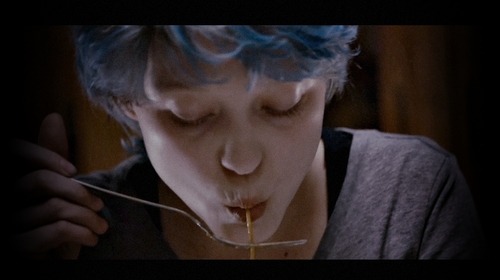Mary Rose Cook's notebook
The public parts of my notebook.
Blue is the Warmest Colour

It’s really hard to choose any stills from this film. Most of them are either beautiful and, so, make the film seem trite, or mundane and, so, make the film seem empty. The one I wanted was of Adèle floating in the sea, finally able to get away from her own emotions and the tumult of circumstances that life has imposed on her. But the stills I could find of that look too sexualised and miss the point.
I chose the shot above. It’s at once down to earth and nicely composed.
It’s rare for a film to take you on a journey, where you think back to the start and can’t believe how much everyone has changed. Malcolm X did this. And Blue is the Warmest Colour does this.
The sex scenes, certainly in the way they have affected the film’s reception, are a distraction. It’s the emotional honesty of the film that is great. But, in the internal logic of the film, the sex scenes are appropriate. The director is trying to show emotions in raw form. The sex scenes are one of the expressions of that. They are, like the the snot that runs down Adèle’s lip when she cries, a way of saying: “If you want raw, I’ve got raw. You may think that two women having sex is sexy, but it is a mixture of crude and funny and sexy and beautiful. Like sex.”
My favourite line comes when the relationship is breaking down. Emma the painter says to Adèle the schoolteacher, of the woman Emma is flirting with at a party:
“She’s a painter, too.”
#notebook #medianotes